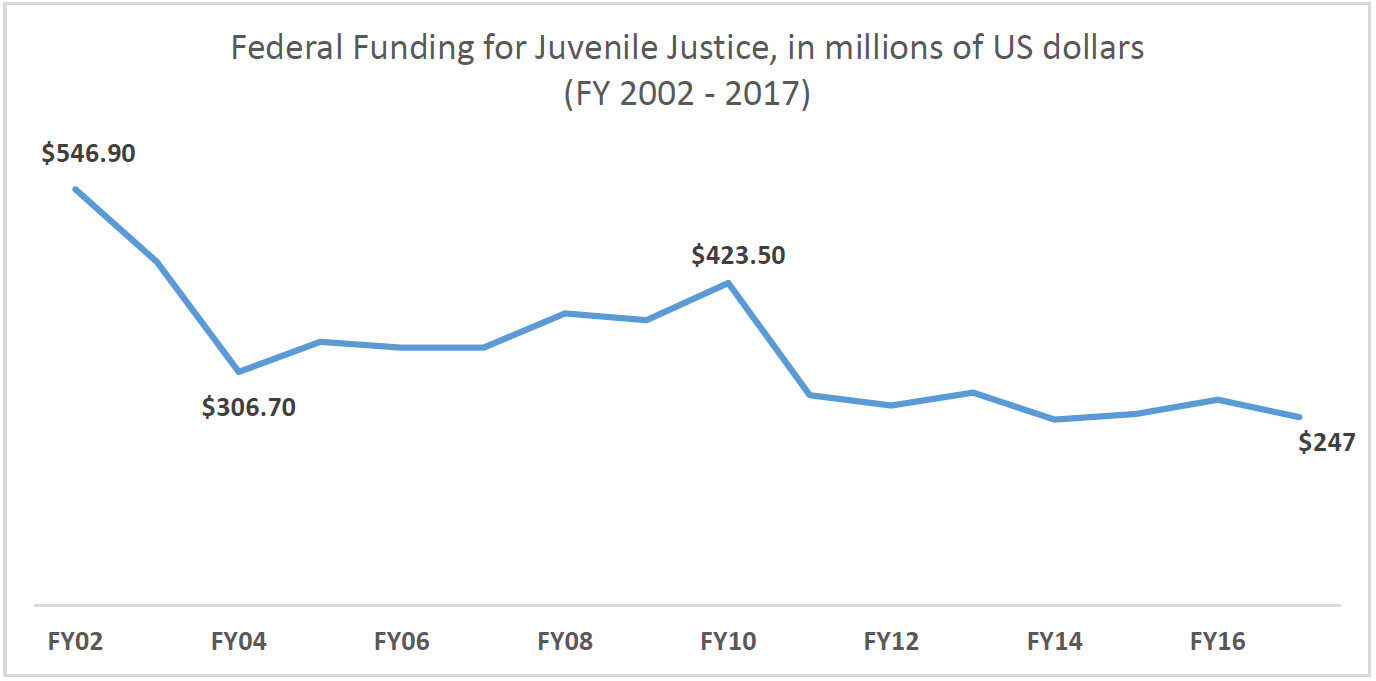Our nation’s juvenile justice system receives the lowest level of federal funding it has seen in history, with no indication that this trend will be reversed. And despite the reduction in overall youth incarceration, the systemic gutting of institutions across the countries is a real possibility.
In 2015, as many as 70,000 children and adolescents were held in America’s juvenile correctional facilities, group homes, residential treatment centers, and other institutions of what is collectively termed ‘the juvenile justice system’. Of these youth, no fewer than 48,000 were held in longer-term ‘residential treatment’ facilities as part of a post-adjudication judgment or other mandatory detention. Importantly, these estimates do not include the approximately 4,700 American teenagers held in adult jails and prisons each night, a practice that exposes an alarming number of youth to sexual assault, and was shown to be largely ineffective at preventing recidivism as early as the 19th century.
Though a far cry from the bleak reality of decades past, a rate of 65 ‘involved’ individuals per 100,000 youth population is very troubling; in fact, it is the highest rate in the world.
Driven by a concerted effort to wrangle over-institutionalization, the youth involvement rate has actually decreased by 22% over the four most recent years of available data (2011 to 2015). Still, the needs of the juvenile justice system are actually growing: in addition to providing lodging and sustenance, many facilities deliver mental health services and provide educational offerings, which are essential features of the rehabilitation process but can carry a hefty price tag. Yet despite these growing needs, federal funding for juvenile facilities has actually been cut by more than 40% – a precipitous decline of $117 million over seven years (see figure below). As a result, juvenile justice professionals across the country are slashing vital services and making difficult decisions, resulting in deteriorating conditions for youth and undermining the system’s core function: to prevent recidivism and equip youth with the tools necessary to avoid re-involvement.

Note: Estimates of federal funding above comprised of Titles II and V of JJDPA, JABG, Mentoring, and several other smaller funding streams..
Source: “Juvenile Justice Federal Funding Chart”, Act 4 Juvenile Justice, http://bit.ly/2i19s5f. Visualization produced by author.
Given the constraints imposed by insufficient federal support, facility-level directors across the country have had to forego opportunities to partner with non-penal social services organizations and test innovative approaches to youth rehabilitation in order to cover the bare essentials. In practice, this often means directors are unable to finance much more than compliance monitoring and other basic operations.
In a system known for facilities that struggle to meet even basic quality standards, the unprecedented drop in funding is a blatant rejection of responsibility for some of the most vulnerable members of our society. Although the U.S. juvenile justice system has never been a paragon of luxury, the worrisome funding freefall makes it increasingly unlikely that facilities will be able to serve our youth. It is the responsibility of the federal government to restore funding to a reasonable level or risk creating a negative feedback loop with widespread harm to the children and adolescents most in need of support.
